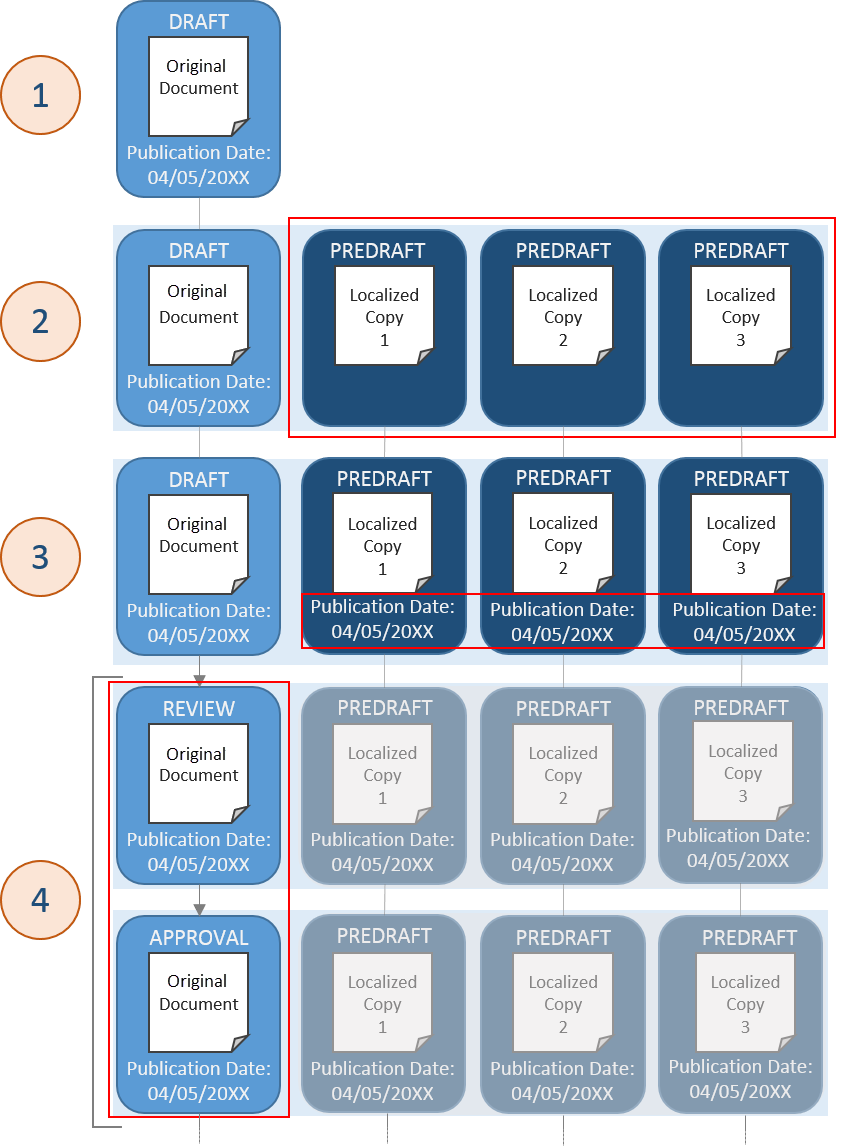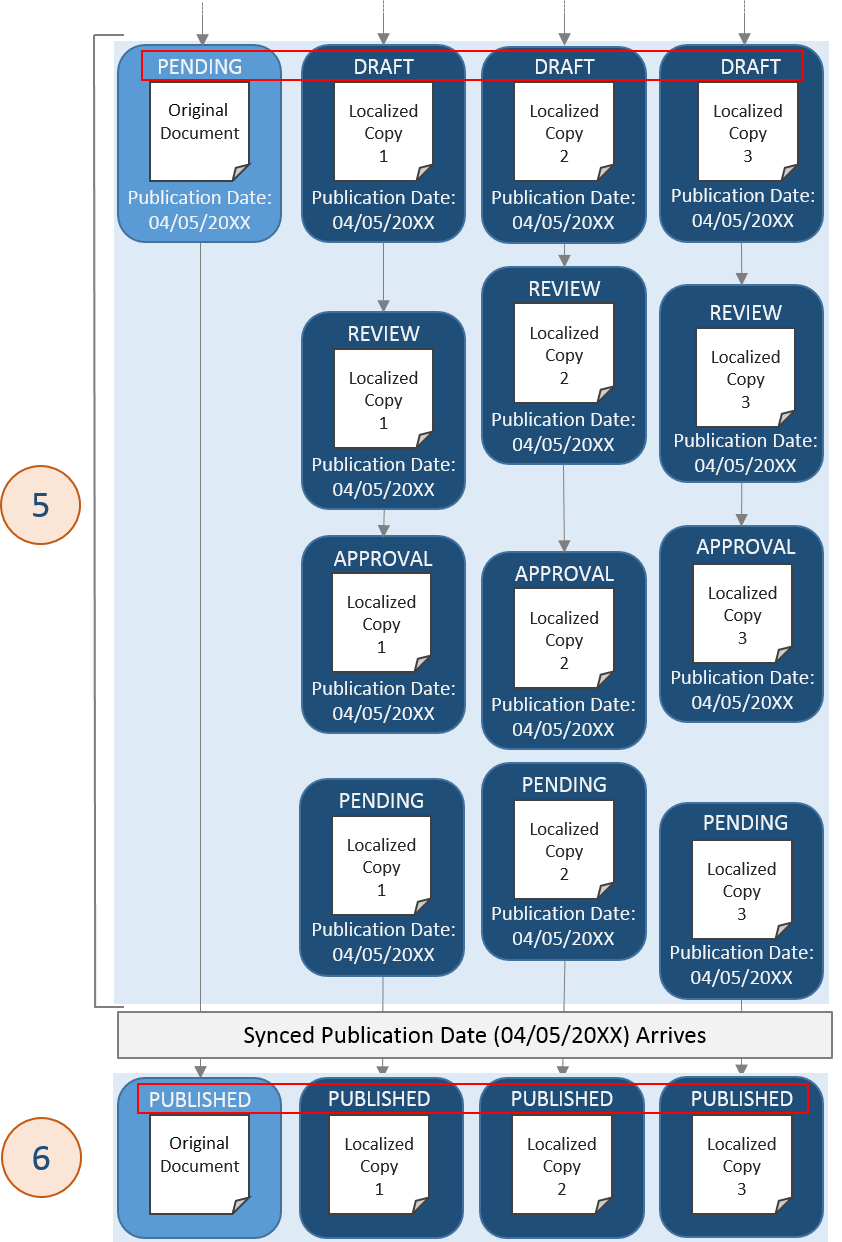Using Localization Workflow
The Localization Workflow feature applies to users assigned the Document Owner or Assessment Owner role in Policy & Procedure Management and provides:
-
Distribution of corporate copies of content to various locations. The assigned owners of localized copies can modify their copies as necessary by translating the text, modifying the text, changing settings, and making local task assignments.
-
Automate notification to copy owners when the original is approved. For reading/completion assignments made in the original document's/assessment's Assignees step of the Properties Wizard, each user is automatically assigned to read or complete the localized copy that matches that user's preferred language.
-
Separate review and approval processes for the original and each of its copies.
-
Syncing of assignee tasks between an original and its copy and sync assignments. The status of all reading or completion task assignments—those assigned in the Assignees step of the Properties Wizard in the original document/assessment and those assigned in each localized copy—can be viewed in the original document/assessment Overview and in reports that include the original document/assessment. Localized copy owners can translate or otherwise modify assessment text but cannot add or delete questions. All assessment results can be viewed in reports that include the original document/assessment.
Sample Localization Scenarios
The following are some sample scenarios for when this feature can be especially useful.
- Primary document with translated copies: An international IT company needs translated copies of a software purchasing policy for its various offices around the world. The company also wants the main office to control the document content and needs a process for updating the translated copies whenever the original document is updated.
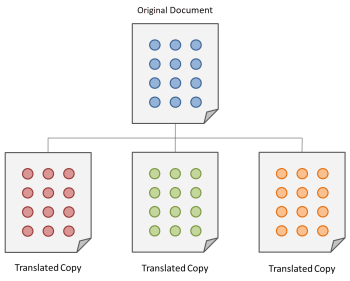
- Primary document with modified copies: Corporate headquarters of a healthcare organization needs control over an admittance policy's basic content but also needs to allow some content flexibility for the local regulations of its many hospitals located throughout the western United States.
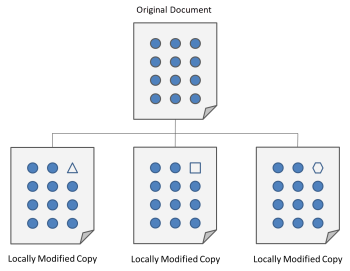
- Primary document with copies that are both translated and modified: A worldwide insurance company with its headquarters in Atlanta has satellite offices in Hong Kong, Quebec, London, Paris, and Frankfurt. The company's human resources department needs to distribute a hiring policy document that each office will both translate and modify to reflect local labor laws.
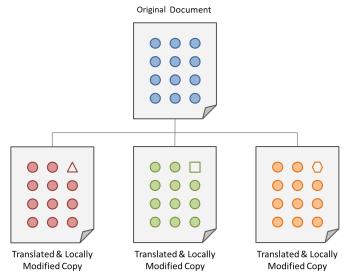
Other Sample Scenarios
Centralized tracking of reading/completion status: The compliance officer of a large corporation distributes copies of an evacuation procedure document to each building at the corporate headquarters campus. The document includes an assessment that assigned readers must successfully complete in order to mark the document as read. The compliance officer asks the owner of each site copy to replace the graphic of the main building floor plan with its building floor plan. She also needs to track who has read the evacuation procedure, including the original document and all site copies, and wants to periodically generate an assessment results report that includes all assignees.
Automatic assignment of readers to translated copies: The director of human resources creates a harassment policy document in English and creates copies of the document that he sends out to an agency for translation into the company's five official languages. He needs to assign all users at all company sites to read the document in their preferred language (which may or may not be the same as the site's default language).
Typical Localization Workflow Process
The Localization Workflow process can consist of the following high-level steps:
Set Up
- Your organization buys an Enterprise Policy & Procedure Management license, which includes the Localization Workflow Module.
- The administrator creates a template with Localization Workflow enabled.
Use
- An owner creates a original document or assessment using the enabled template and sets the document's/assessment's publication date to some time in the future that is estimated to be after all localized copies of the original document/assessment will be completed.
- In the Properties Wizard of the original document/assessment, the owner adds localized copies by providing a title and selecting an owner, template, site, and language for each copy. These copies reside in Predraft status until the original document/assessment is approved.
- The original document/assessment owner opens each localized copy and sets the same publication date as the original document/assessment.
- The owner submits the original document/assessment for review and approval.
- When the original document/assessment is approved and moved to Pending status (because of the postdated publication), the localization copies are moved into Draft status within their assigned sites and the copy owners are notified. The assigned owners then work on the copies by translating them or modifying them as appropriate for their local reading/completion task assignees.
The assigned owners submit the copy documents/assessments independently for local review and approval. Assuming that each of the copy documents/assessments is approved before the synced publication date, each copy moves into Pending status.
- When the assigned publication date arrives, the original and all copy documents/assessments currently in Pending status are published/started, and notifications are sent to all assignees required to read the documents or complete the assessments.
